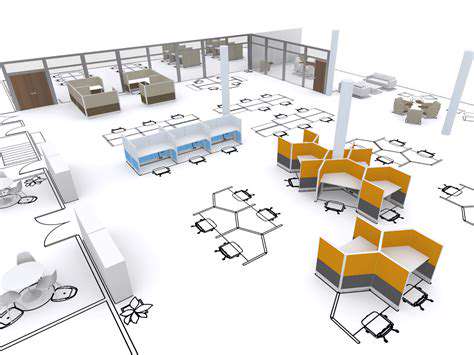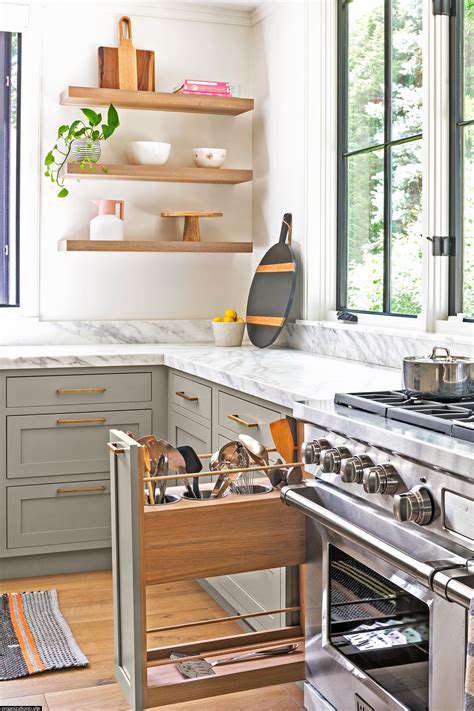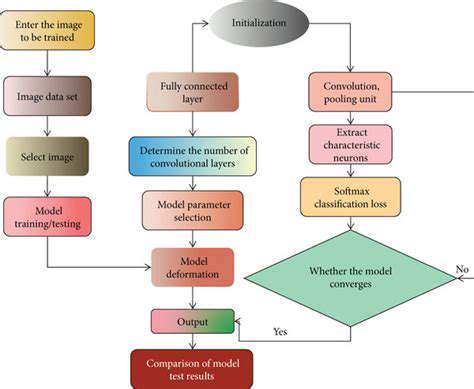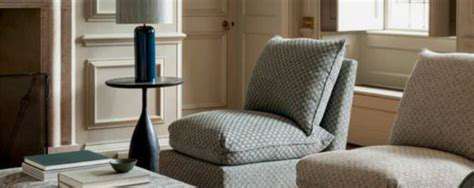Modern Bedroom Tips for Enhancing Sleep Quality and Storage Solutions

Optimizing Your Bedroom Environment
Transforming your bedroom into a sleep-friendly oasis requires attention to detail. Lighting plays a pivotal role - try using warm-toned bulbs and dimmers to gradually reduce brightness as bedtime approaches. Most sleep experts agree that maintaining a temperature between 60-67°F (15-19°C) creates ideal sleeping conditions. For those sensitive to sound, consider a white noise machine or simple earplugs to mask disruptive noises.
Introducing greenery can work wonders for your sleep space. Snake plants or peace lilies not only purify the air but also add a calming, natural element. Their presence can lower stress hormones, making it easier to drift off to sleep. Just be sure to choose plants that thrive in low-light conditions if your bedroom lacks sunlight.
Choosing the Right Bedding
Your bedding choices make a world of difference in sleep quality. Memory foam mattresses adapt to your body shape, while latex offers responsive support with natural breathability. Pillow selection should match your sleeping position - side sleepers need thicker support, while back sleepers may prefer medium loft.
The tactile experience matters too. High-thread-count cotton sheets feel luxurious against the skin, while bamboo-derived fabrics offer exceptional temperature regulation. For those who toss and turn, a weighted blanket (typically 10% of your body weight) can provide comforting pressure that mimics a gentle hug.
Establishing a Relaxing Bedtime Routine
Consistency is key when preparing your body for sleep. Try establishing a 30-60 minute wind-down period with activities like:
- Gentle stretching or yoga poses
- Journaling to clear your mind
- Sipping caffeine-free herbal tea
The blue light from phones and tablets suppresses melatonin by up to 50%, so consider using blue light filters or switching to analog activities before bed.
Creating sensory cues can powerfully signal sleep time. Light a lavender-scented candle (extinguished before sleep), play nature sounds, or use a silk sleep mask. These rituals train your brain to associate certain stimuli with sleep onset.
Decluttering and Design for Serenity
Visual clutter creates mental clutter. Start by removing unnecessary items from surfaces and implementing smart storage solutions. The Japanese concept of ma (negative space) applies beautifully to bedroom design - leaving breathing room around furniture creates calm.
Color selection profoundly impacts mood. Soft blue tones can lower blood pressure and heart rate, while pale greens evoke nature's tranquility. If repainting isn't an option, incorporate these hues through bedding, artwork, or accent pieces. Remember that matte finishes absorb light better than glossy surfaces, reducing sleep-disrupting reflections.
Designing a Space That Reflects Your Style: Personalization and Aesthetics
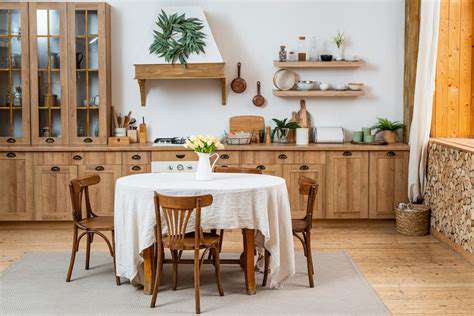
Designing a Space That Reflects Your Style
Your living space should tell your unique story. Begin by collecting inspiration - create a physical or digital mood board with images that resonate with you. Notice recurring themes in the spaces you're drawn to: Is it the clean lines of Scandinavian design? The warmth of rustic textures? Or perhaps the boldness of Art Deco?
Function must guide form. A reading nook demands different elements than an entertainment space. Measure your room and create a scaled floor plan before purchasing furniture. This prevents overcrowding and ensures proper traffic flow.
Understanding Your Personal Style
Discovering your authentic style requires self-reflection. Ask yourself:
- What clothing styles do I feel most confident in?
- What vacation destinations inspire me?
- Which historical periods fascinate me?
These answers often translate well to interior design preferences.
Your home should evolve as you do. Rather than chasing trends, focus on timeless pieces that speak to you personally. Mixing vintage finds with contemporary items creates depth and character.
Choosing the Right Colors and Materials
Color psychology suggests that:
- Earth tones ground and comfort
- Jewel tones energize and inspire
- Neutrals provide flexibility and calm
Test paint samples at different times of day before committing. Natural materials like wood and stone age beautifully, developing patina that adds character over time.
Texture creates visual interest even in monochromatic schemes. Combine smooth ceramics with nubby textiles and metallic accents for dimension. Remember that lighting dramatically affects how colors and materials appear.
Incorporating Furniture and Accessories
Invest in a few quality anchor pieces, then build around them. A well-made sofa or dining table sets the foundation for years of use. When selecting accessories, follow the rule of three - groupings of odd numbers are more visually appealing.
Personal artifacts make a house a home. Display meaningful items like travel souvenirs, family heirlooms, or handmade pieces. Rotate collections seasonally to keep the space feeling fresh without constant redecorating.
Layering Textures and Patterns
Successful layering balances contrast and harmony. Pair a chunky knit throw with smooth leather, or a geometric rug with organic-shaped pottery. For pattern mixing, vary the scale - combine large-scale prints with small-scale designs in coordinating colors.
Textural contrast adds richness without visual clutter. Try combining:
- Velvet and linen
- Woven rattan and polished marble
- Aged brass and matte ceramics
This creates sensory interest that makes a space feel curated rather than staged.
Maintaining Consistency and Harmony
Create flow by repeating key elements throughout your home. This could be a signature color, material, or design motif. For example, use the same metal finish on hardware throughout, or repeat a favorite fabric pattern in different applications.
Edit ruthlessly. Every item should earn its place - either through function or emotional resonance. Periodically assess your space with fresh eyes, removing anything that no longer serves you. This mindful approach results in a home that truly reflects your evolving self.
Read more about Modern Bedroom Tips for Enhancing Sleep Quality and Storage Solutions
Hot Recommendations
- Trendy Kitchen Interiors: Open Concepts and Smart Storage Solutions
- Expert Multi Functional Room Ideas for Combining Entertainment with Fitness
- Modern Home Office Inspirations for a Study That Merges Work and Leisure
- Modern Bathroom Design Ideas for Optimizing Small Spaces and Safety
- Expert Strategies for a Children's Room That Inspires Growth and Imagination
- Modern Bathroom Inspirations for a Space That Prioritizes Safety and Efficiency
- Creative Multi Functional Space Ideas for a Room That Combines Gym and Media
- Modern Techniques for a Multi Purpose Room That Enhances Home Entertainment and Fitness
- Expert Guide to Balancing Modern Art and Functional Living Room Layouts
- Expert Tips for a Children's Room That Balances Play, Learning, and Security
